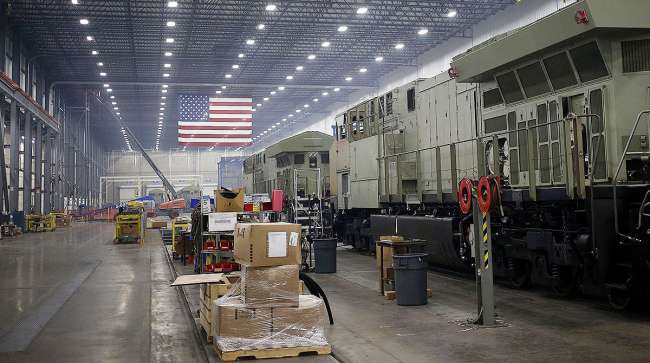Manufacturing Activity Falls to Lowest Level in Decade

[Stay on top of transportation news: Get TTNews in your inbox.]
WASHINGTON — U.S. manufacturing activity fell to the lowest level in more than a decade, as the sector was hurt by weakening demand and last year’s global economic slowdown.
The Institute for Supply Management, an association of purchasing managers, said Jan. 3 that its manufacturing index dropped to 47.2 in December, from 48.1 in November. Last month’s level was the lowest since June 2009, when the U.S. economy was at the tail end of the Great Recession.
Any reading below 50 signals contraction — and the index has been below that crucial level since August. The new orders, production and employment components of the index were negative.
.@ISM® Report On Business® survey respondent in transportation equipment: “Sales are decent, but we’re wondering what 2020 will bring. Still hedging that it will be successful — but maybe not as much as this year.” https://t.co/PlL8IsUEel #ISMROB #economy #manufacturing — Institute for Supply Management (@ism) January 3, 2020
The manufacturing sector last year was rocked by slower global growth and the escalation of trade tensions between the United States and China.
Construction Spending Up 0.6% in November
Spending on U.S. construction projects rose a solid 0.6% in November as gains in home building and government projects offset weakness in nonresidential construction.
It was the fifth consecutive monthly gain and a sharp improvement from a tiny 0.1% October advance, according to a Commerce Department report Dec. 3. The acceleration was led by a 1.9% rise in home construction which was more than double the 0.7% October increase.
Spending on government projects rose 0.9% in November as both activity at the federal level and state and local levels increased.
Spending on private sector nonresidential projects fell 1.2%, the biggest drop since April, reflecting widespread weakness with hotel construction down 3.8% and manufacturing down 2.4%.
Lower mortgage rates and a healthy job market have boosted home building. The average national rate for a 30-year fixed-rate mortgage dipped to 3.72% this week. That was down significantly from a year ago when the 30-year mortgage was at 4.51%.
At this time a year ago, the Fed had wrapped up a year when it had boosted interest rates four times. However, in the face of rising global weakness and headwinds generated by a U.S.-China trade war, the Fed switched from hiking rates to cutting its benchmark rate three times last year, giving a boost to financial markets and interest-sensitive sectors such as housing.
The gain in home building reflected a 1.2% rise in single-family construction, which offset an unchanged reading for the smaller apartment sector.
The rebound in housing is expected to continue in 2020. Application for new building permits, seen as a good indicator of future activity, jumped in November to the highest level in more than a decade.
The 0.9% increase in government construction reflected a 1.7% rise in spending by the federal government and a 0.8% increase in spending by state and local governments.
Martin Crutsinger contributed to this report.
Want more news? Listen to today's daily briefing:




